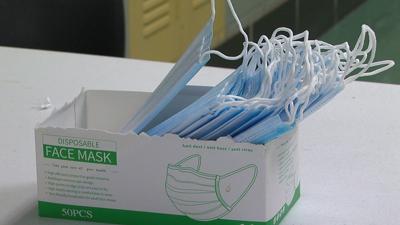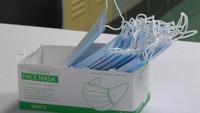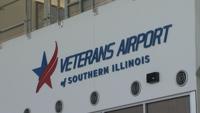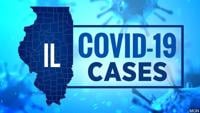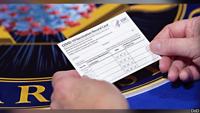(WSIL) -- During a pandemic a school nurse's job is more important than ever. Right now, schools are struggling to keep them, as they're under siege from lacking budgets and a growing list of responsibilities thanks to COVID-19.
Frankfort Community Unit School District 168 Nurse Amy Harkins says it's fair to say their workload has increased. "Making sure they have their masks on, and we do temperature checks at the doors to make sure everyone is fever free before they come into the school."
School nurses are working the front lines to stop the spread, triaging sick children for signs of a pandemic illiness.
"Trying to determine, you know if this is someone who could possibly have COVID, or if it's something just as simple as a cold or just a runny nose. That's probably one of our biggest challenges right now, is trying to make that decision."
The Frankfort Community Unit School District is fortunate to have Harkins and a team of skilled nurses covering each school. The National Association of School Nurses reports currently, 25-percent of U.S. schools have no nurse at all.
"If a teacher was to notify the nurse that, say a student is sick, we now go up to the student, instead of bringing them through the hallways and stuff to try to assess the situation. We have to do a little bit more of triaging this year. You know, we're very careful of not just sending someone down with a headache, or a student down who is coughing or something. We're a little bit more cautious on how we react to that."
Director of Health Education and Emergency Preparedness with the Franklin-Williamson Bi-County Health Department, Carrie Eldridge, says communication with parents has been critical to keeping COVID numbers down.
"It's up to the parent to notify the school, and then the school will notify us that they have a student who is in fact positive for COVID-19. Then we will talk with that school nurse and start trying to do our contact tracing within the school and identifying any student who might meet that close contact definition."
This includes keeping a log of information, even including in some cases, a negative COVID test and an alternate diagnoses from a physician when calling in sick.
"You know, normally a parent could just call in and say 'I'm keeping my child home sick today,' but now we need more information than that," says Harkins.
This comes at a time when some schools are struggling to hire enough nurses. According to an NPR report from early this year, the Illinois State Board of Education says only 900 certified school nurses work in schools across the state to cover 41-hundred schools.
Many of those are part time. For the 2018-2019 school year, the Illinois State Board of Education lists the full time equivalent to be about 642 nurses.
Jayson Hayes is the Superintendent of Massac Unit School District. He says it's hard for schools to compete for qualified nurses.
"It's getting harder and harder to find nurses in general, that want to work in schools. I think part of that's financial, because you can make a lot more money than schools pay nurses, especially RN's."
Many schools Nationwide have to share nurses between multiple schools. Massac for example, has seven buildings and four fulltime nurses.
"We have a lot of students in those buildings that require certain medication at certain times of day and it really becomes challenging for, one nurse to serve two or three buildings at time."
Donkin says if schools are going to continue to operate safely, they'll have to be creative especially if their budget doesn't expand with their growing needs amid the pandemic.
"The Federal CARES Act before had helped us, but that's about to run out, that's why we really hope something comes through there, because to do this safer, sometimes takes more personnel, and trying to find them and pay for them is going to be a challenge as we go forward."
According to the National Association of School Nurses about 76-percent of school nurse funding comes from local education dollars. Only a fraction comes from local health departments or hospital systems. The rest comes from foundations or federal and state funding.

